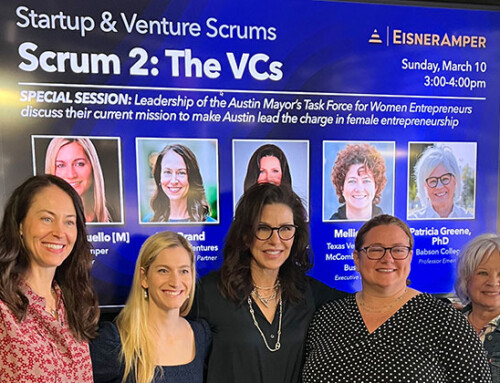While the value of diverse teams and women in leadership are relatively new topics in the business world, the field of gender lens investment is even newer. Since the field’s estimated beginnings in 2009, subsegments like “feminomics” and “inclusive finance” have spun off, but at it’s core gender lens investing is: incorporating gender as a factor to guide investment strategies. The field uses the broader term “gender” rather than “female” because, as the Stanford Social Innovation Review states, “Using ‘gender’ brings both men and women into the conversation. The movement’s objective is to look at the entire financial and social system, not just at women.”
Gender lens investing is part of the broader genre of “impact investing,” a term coined by the Rockefeller Foundation in 2007 that put a name to investments made with the intention of generating both financial return and social and/or environmental impact. It was once thought that impact investing was a “softer” kind of investing that meant sacrificing monetary returns for the sake of non-monetary ones. Research shows that this is simply not true. In just one example of many, Morgan Stanley used Morningstar data to prove that sustainable equity funds meet or even exceed the returns of traditional funds.
Impact investing as a whole has enjoyed a surge of popularity and innovation over the past decade or so with increasing speed, spawning new investment vehicles like social impact bonds / (PFS) programs and more recently green bonds. As investors ask for more impact investment solutions, retail investors like BlackRock, Prudential and Bain Capital have moved off the sidelines over the past year and added impact investment offerings like other existing firms such as JP Morgan, Morgan Stanley, and Merrill Lynch. While general impact investing is becoming more mainstream for high net worth individuals and institutions, gender lens investing has not benefitted from the same level of traction in the private equity and venture capital space. This is peculiar, because there is a wealth of data showing that gender-oriented investing can accelerate impact, both financial and social; women-led businesses outperform and they are also driving a greener future.
Veris Wealth Partners produced the Women, Wealth & Impact report to demonstrate that “better companies are created by shifting the flow of wealth and power to women, whether we aim to lift women and girls out of poverty or bolster women’s leadership and entrepreneurial pursuits” and Trillium’s Investing for Positive Impact on Women report which presents concrete gender-lens investment examples have spurred increasing investor interest in gender lens investing across fixed income and public equities.
There are new offerings, like Calvert Foundation’s Women Investing in Women Initiative for fixed income and the PAX Ellevate Global Women’s Index Fund or Morgan Stanley’s Parity Portfolio for public equities, and initiatives like The Women Effect bringing a new community together to accelerate deployment of interested capital into gender-lens investment opportunities.
Despite all of this collective data and momentum, we have seen little, if any, progress in the private equity and venture capital space. This is partially because pension funds, which according to a recent Department of Labor issuance can now invest for ESG purposes, generally have a minimum investment size of $75M. Contrasted with an average VC fund size of $30M… there is a mismatch. Still, there are currently only 6 early stage women-led venture capital funds in the United States investing with a gender-lens, all of which are on the East and West Coasts (there are none in the Central U.S.!). So, there is obviously much opportunity here and things are about to change as the bar continues to rise with how investors want their capital deployed.
There is also much progress to be made in the standardization of gender lens investment criteria. No uniform metrics or standardized criteria currently exist to compare actual fund portfolios to determine gender impact in terms of women’s leadership profile. Without this information, potential investors interested in leveraging the historic returns gender diverse teams have enjoyed are left uncertain about the differences between investment fund options. Transparent and uniform assessments could help raise the visibility of gender-oriented funds as well as increase additional investor interest.
Enter True Wealth Ventures. One of the goals of True Wealth Ventures is, of course, to fill the geographic gap of early-stage gender oriented VC funds in the U.S., so I am also excited to announce our participation in a project with ACG Inc., supported by George Mason University and funded through the Kauffman Foundation. The Foundation is funding a pilot study that will benefit investors who would like to proactively invest in gender diversity. We are working on developing standardized metrics for women’s leadership in venture capital funded portfolios that could be used to inform investors and to compare and track performance. It is my hope that this study, in streamlining available fund data, will make gender lens investment more attractive, accessible, and accepted… ultimately creating more True Wealth.
“State of the Field of Gender Lens Investing,” Criterion Institute
“The Rise of Gender Capitalism,” Stanford Social Innovation Review
“Innovative Finance,” The Rockefeller Foundation
“The Business Case for Sustainable Investing,” Morgan Stanley
“Investing with Impact: Creating Financial, Social and Environmental Value”, Morgan Stanley
“Fact Sheet: Social Impact Bonds in the United States,” Center for American Progress
“Pay For Success Programs: An Introduction,” PayForSuccess.org
“Green Bonds Take Root,” Morgan Stanley
“A New Inning for Impact Investing,” Forbes
“Women, Wealth, & Impact,” Veris Wealth Partners
“Investing for Positive Impact On Women,” Trillium Asset Management
“Women Investing in Women Initiative,” Calvert Foundation
“PAX Ellevate Global Women’s Index Fund,” PAX World Investments
“The Parity Portfolio Strategy,” Morgan Stanley
“Department of Labor Opens the Door for ESG Considerations,” Pensions & Investments
Henderson, Joshua, “The Complete Ecosystem Supporting Women-Led Tech Companies”
”Women’s Entrepreneurship Research – What We’re Funding”, Kauffman Foundation






